Welcome to my blog!
I know why you have come.
You have been told to start the low-FODMAP diet, to treat your symptoms of IBS.
Perhaps you consulted your primary care provider, or gastroenterologist. They may have advised you to start a low-FODMAP diet, handed you a (outdated) food list (with many of your favorite things), and told you to follow up after a couple months.
Sound about right?
Now you are lost, wondering what is this bizarre eating program? And, how should you move forward?
I know exactly how you feel.
I have IBS, and follow a low-FODMAP diet.
You have every right to be overwhelmed and confused. The low-FODMAP diet is not intuitive and seems very complicated at first. But you will soon get the hang of it. I PROMISE.
Just open up your mind to something new .
Trust me on this. I am a double board certified physician and surgeon, and counsel people about this program everyday.
I have also dedicated the last 12 years of my life to writing about, cooking with, and researching the low-FODMAP diet.
Let’s begin with some basics:
What is a FODMAP?!
The low-FODMAP diet was introduced in Australia, around 2005, or so.
A group of doctors and researchers studying IBS recognized the harsh impact some carbohydrates have on GI symptoms. They decided to create a restrictive program which cut out all the carbs most likely to irritate the gut.
The restriction of these groups needed to happen at exactly the same time. That way, people with IBS could rest their bowels, stop all the irritation, and begin to feel BETTER.
Guess what. The diet worked!! Studies showed up to 85% of IBS patients felt better on the elimination phase of the low-FODMAP diet.
The theory was, once symptoms had calmed down, people could (one at a time) reintroduce each of the types of carbohydrates to determine which ones they personally tolerate.
The acronym FODMAP was coined, as there was no existing category that described ALL these noxious carbohydrates collectively (an acronym is a word where all the first letter stands for something else).
This is what FODMAP stands for:
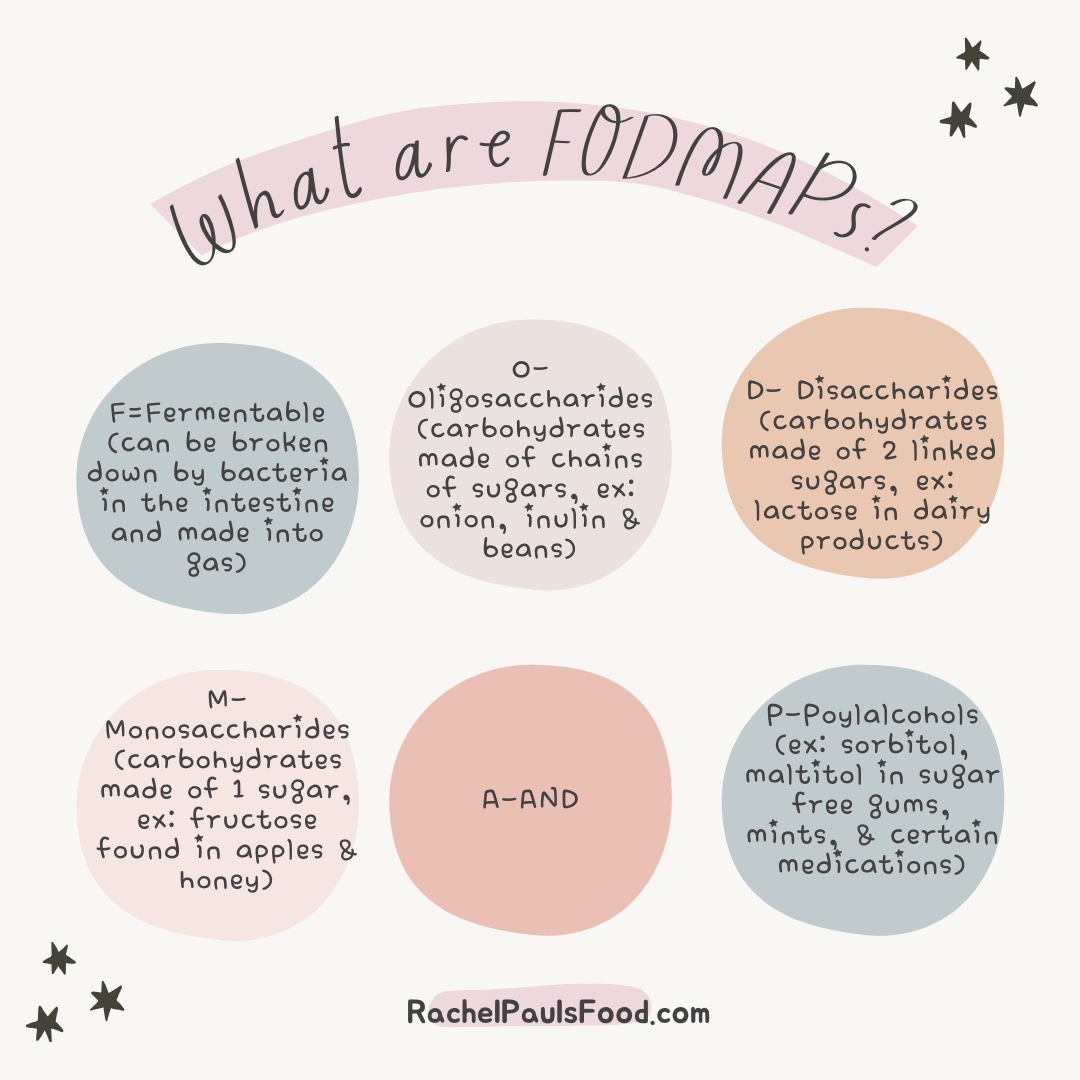
I know, the acronym is a bit clumsy. But it’s what we have.
To make it more confusing, the letters are NOT representing a whole category of foods (example: I used to think the letter ‘F’ stood for fructose, but it does NOT).
The way we commonly think about food categories, lumping them into fruits or vegetables, bread and cereals, etc, does NOT translate into the FODMAP categories of carbohydrate composition.
To add insult to injury, sometimes ONE FOOD has MORE THAN ONE TYPE OF FODMAP.
So, you must follow guidance when beginning this diet!
Stay with me here. Read on. It will be OK.
Why a Low-FODMAP Diet Works
Carbohydrates are in almost everything we eat. They are found in dairy products, breads and grains, beverages, condiments, even foods without calories (like artificial sweeteners and tea).
Some of those carbohydrates are harder to digest than others. As a result, they trigger gas, bloating, diarrhea and/or constipation. Here is how that happens:
- Hard to digest carbs create more water movement in the gut causing diarrhea
- Certain carbs linger more time in the colon, allowing bacteria to ferment them, causing gas
- Imbalance to water transport across the gut walls from undigested carbs leads to constipation
All the symptoms of IBS!
Some foods have high levels of the poorly digestible FODMAPs and are a ‘high-FODMAP food’, and some have low or no FODMAPs, thus are a ‘low-FODMAP food’.
By reducing and avoiding the high-FODMAP foods, you can limit the symptoms associated with them.
All high-FODMAP foods have an associated ‘portion limit’. That means they will or will not trigger symptoms depending on the amount consumed. For some foods, that portion could be larger than others.
Low-FODMAP Diet Phases
The low-FODMAP diet is a process that has THREE PHASES.
It is meant to be a continuum, to provide you with the information you need to succeed in the future.
The phases are:
1. Elimination,
2. Reintroduction, and
3. Integration and Personalization
During the first phase, you will eliminate all these noxious foods and beverages, to allow your gut to heal, and balance out your system. That is the first step. It is known as the ‘elimination phase’.
During the elimination phase it will be important to follow the low-FODMAP diet exclusively, in order to ensure your success. I have written a medical cookbook with many recipes and a four-week meal plan to guide this process (THE IBS SOLUTION PLAN & COOKBOOK).
After the first four or so weeks of the elimination phase, you may be ready to try reintroducing foods, one at a time. This is the second phase of the diet, known as reintroduction. Reintroduction is also a detailed process and will identify which foods are triggers for you. My second book is dedicated to that phase (THE FODMAP REINTRODUCTION PLAN & COOKBOOK).
Once you have finished reintroduction, you will then move into the final and third phase: integration and personalization. From then on, you will be following a ’personalized’ or ‘modified’ low-FODMAP diet.
Each person is different. Some will go back to eating virtually all foods. Others will maintain restrictions.
That is up to your body and your thresholds.
Regardless of what you tolerate, the personalized low-FODMAP diet will be the forever solution to your IBS.
Tips for Low-FODMAP Eating
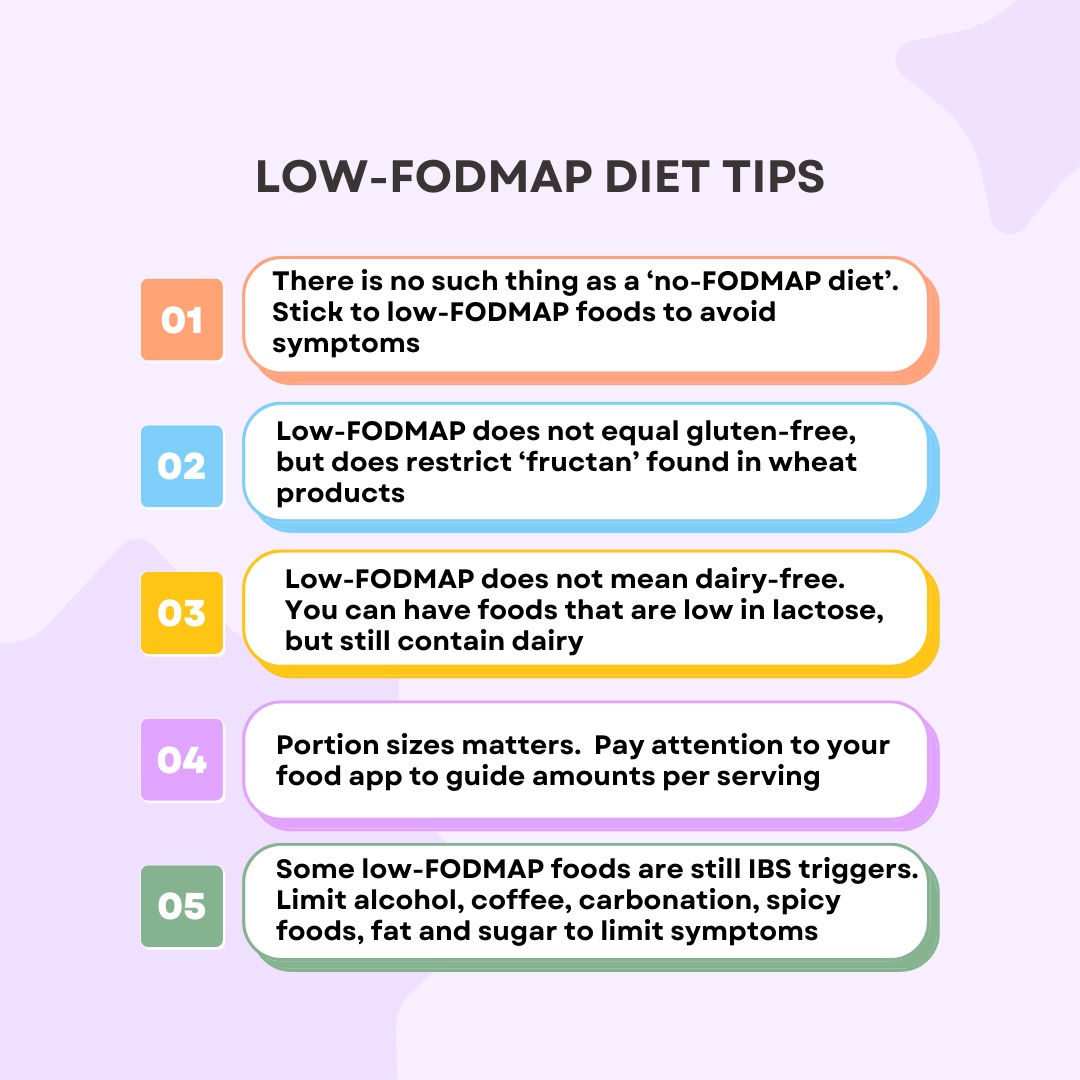
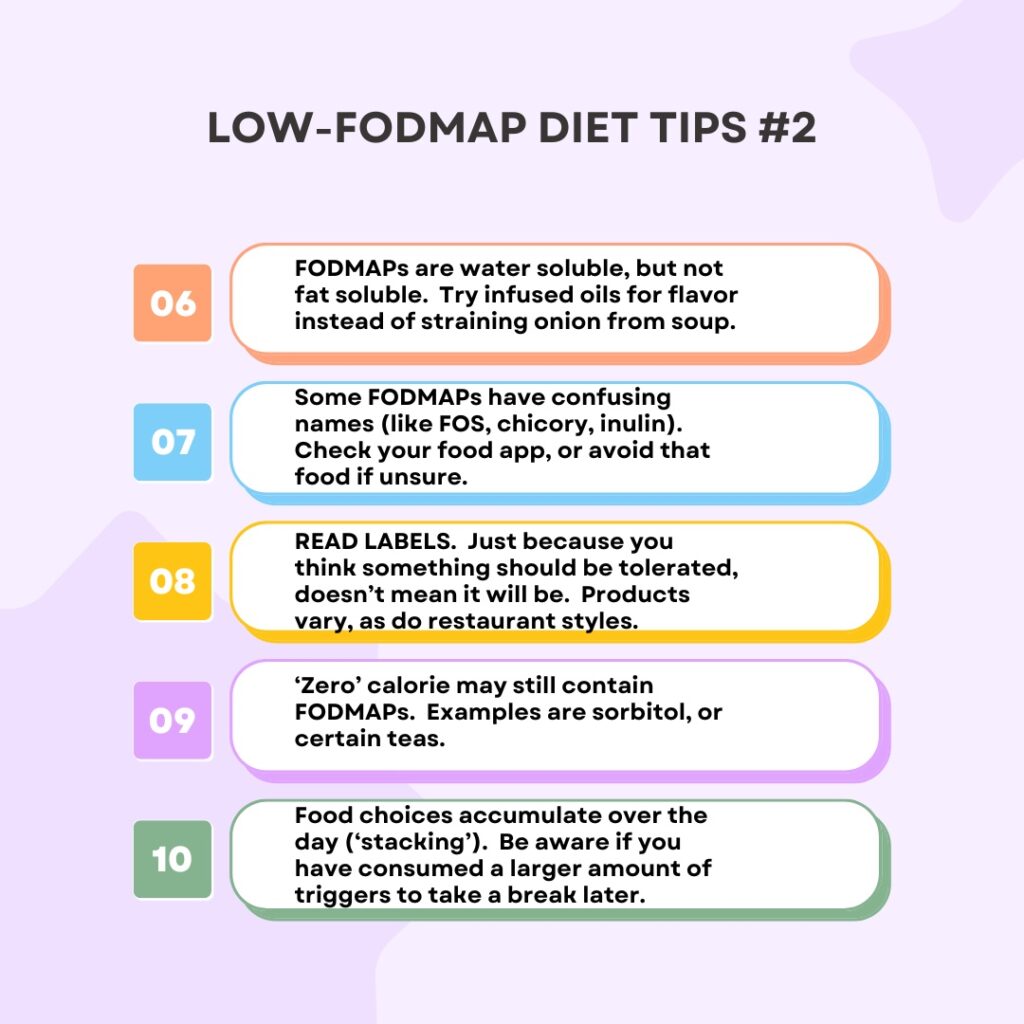
How to know what is low and high FODMAP?
No one knows this part on their own. It is not intuitive, and you can make no assumptions.
For example, you may eat raspberries, but not tolerate blackberries.
A grapefruit and an orange are of completely different compositions.
Bottom line. You need to get an app.
Information regarding FODMAP levels of foods have been, in the majority, provided by the scientists and doctors that described the diet. The information is shared via the Monash Uni app and the FODMAP Friendly app. Both are useful to own and are slightly different in style and reporting.
For each of these entities, a given food is tested, and FODMAP content is calculated based on an average of the results. The recommended serving size is listed for foods to help you know how much to enjoy.

The caveat is, you MUST always know what you are eating:
- Read labels
- Ask restaurants what is in their sauces, dressings, or bring your own substitute
- Read my blog for lists on fast food options (McDonalds, Starbucks, Chipotle and more!)
- Carry a list with you, or your app
- Follow reputable recipes, like my blog and cookbooks
- Never make assumptions
- Read labels (did I already say that?)
**When reading a label, it is important to understand that all ingredients are listed in order of weight. So, the item listed first has the highest weight in the product, and the last item may only be a tiny fraction of the product. You may still be able to tolerate the food if the high-FODMAP additive is the last listed ingredient.
Getting Started
Once you understand what is involved, you need to commit, and begin.
But I think, for optimum success, a few preparatory steps are useful:
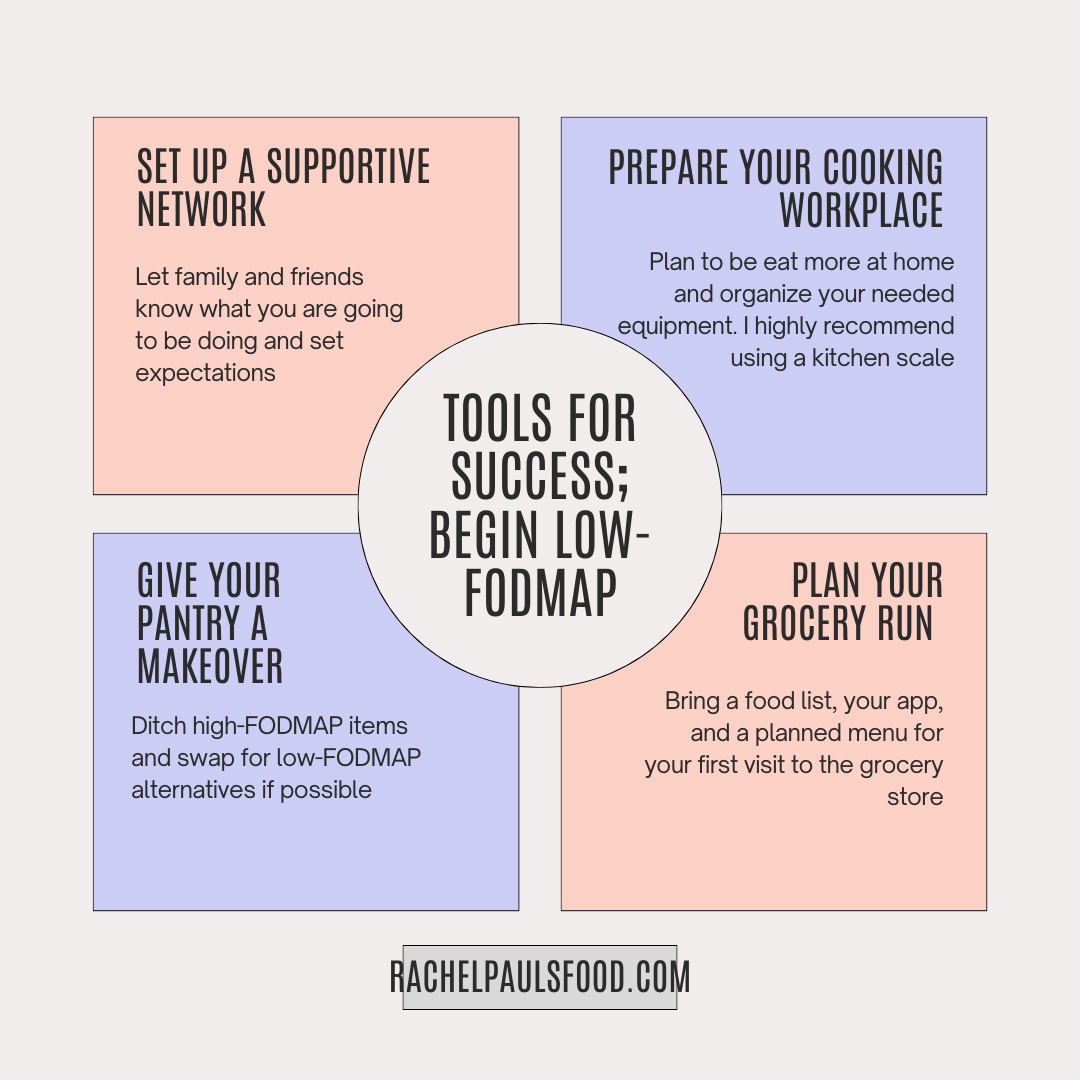
Remember, you are not alone in this. There are literally hundreds of thousands of others on the low-FODMAP diet. Check out Facebook and Instagram for blog support groups, and other tips and tricks.
I have a Low-FODMAP Five Day Meal Plan to help you begin, with menu items and recipes. You can also use my Low-FODMAP High and Low Food Lists, FREE Low-FODMAP GUIDE, and my Low-FODMAP Grocery Shopping Blog and Low-FODMAP Recipe Swaps and Substitutions.
Here are some other pointers to keep temptation away, and foster an IBS-friendly environment wherever you happen to be.
Stock the right snacks at home and work:
- You know your taste buds the best. Having your favorite snacks that are also low-FODMAP in your kitchen, gym bag, and desk at work will mean less chance you will reach for something high-FODMAP when the cravings strike
Know your options for eating out
- Plan ahead. If eating at a friend’s, bring a low-FODMAP dish to share. If dining out, call ahead to verify they have options (such as meat grilled without seasonings, baked potatoes, or salad with oil/vinegar dressing)
Travel smart
- Check out my blog post on prepping for a low-FODMAP trip!
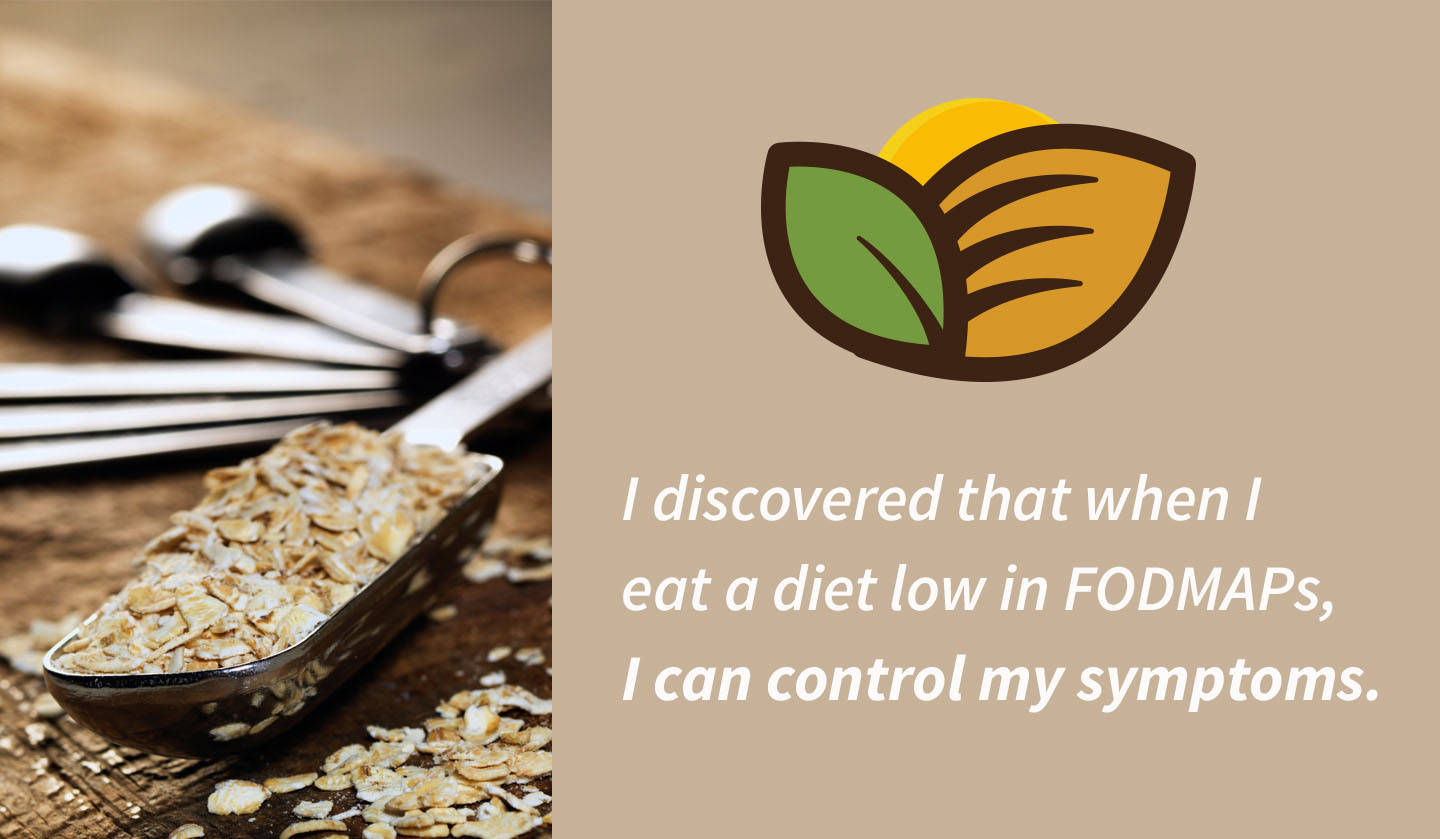
Looking for more details and tips? I have many other posts on my blog...
Some ideas:
- Packing for a low-FODMAP trip; Dr. Rachel’s Top 10 List and Tips to Make it Easier
- Dr. Rachel’s Low-FODMAP Ice Cream Taste Test
- What is the Best Low-FODMAP Flour? We had a bake off!
- Dr. Rachel’s Top 11 Tips and Tricks for the Low-FODMAP Diet (that no one ever tells you)
- Dr. Rachel’s Top 7 Reasons the Low-FODMAP Diet Fails and How to Fix Them
I guarantee that you will find recipes on my website that you enjoy eating, and you won’t have to sacrifice flavor or your favorite foods.
Good luck and as always,
Be healthy and happy,
Rachel Pauls, MD


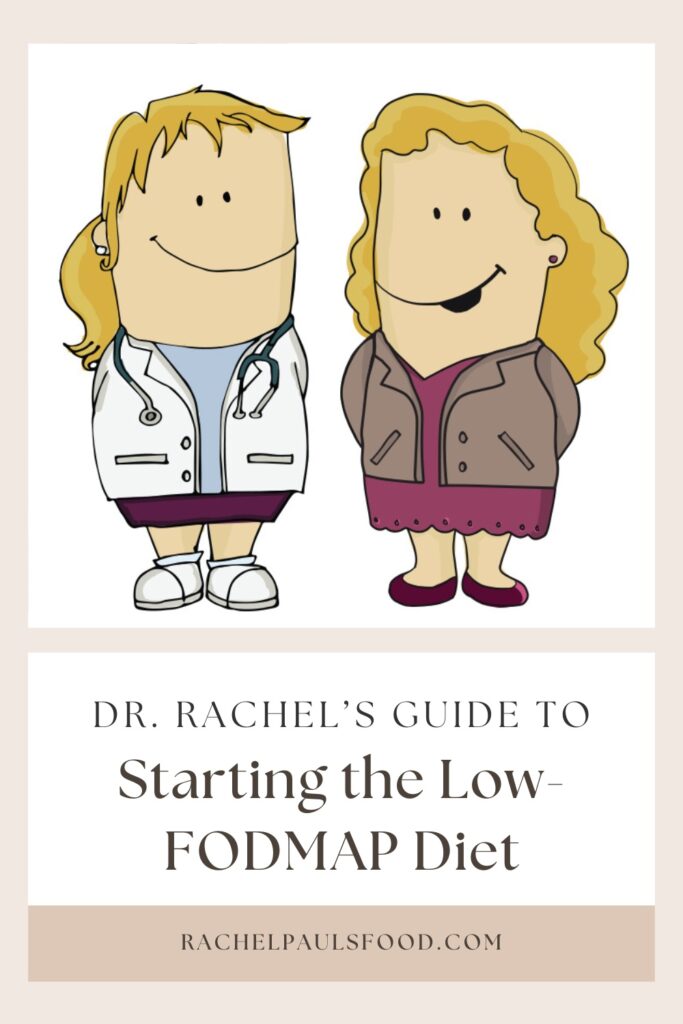


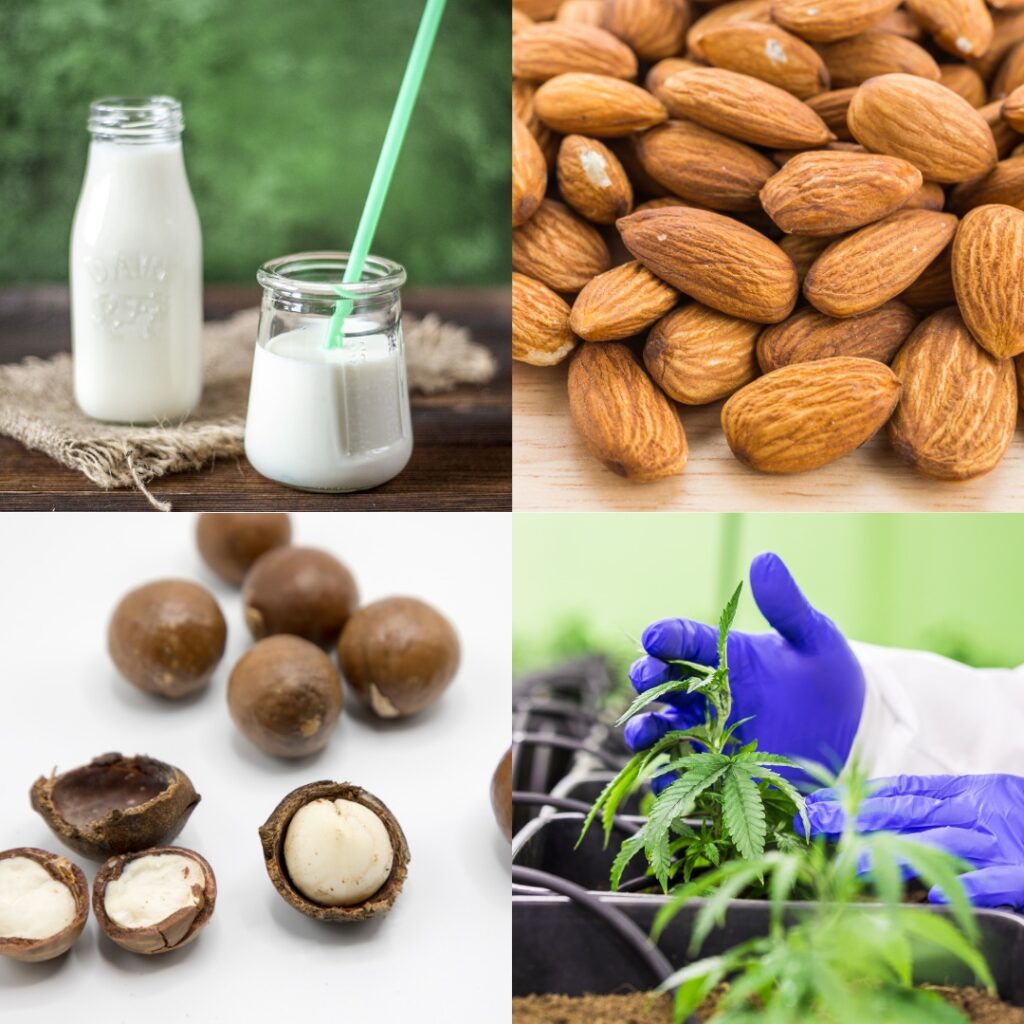
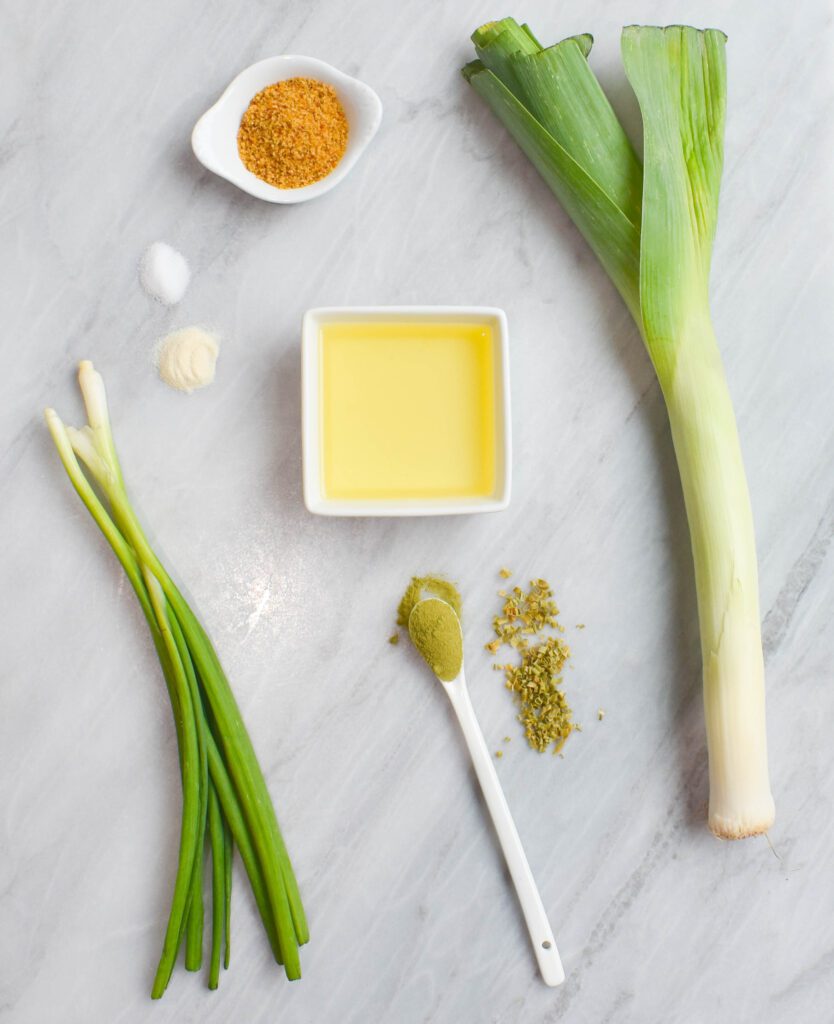
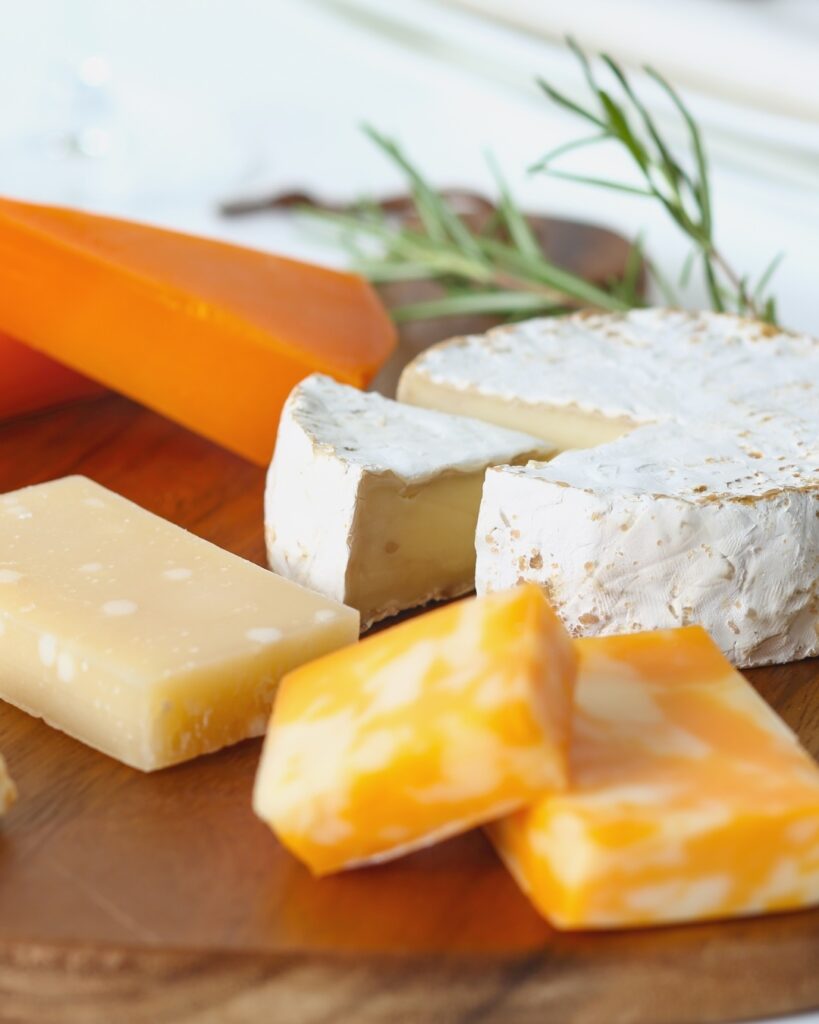
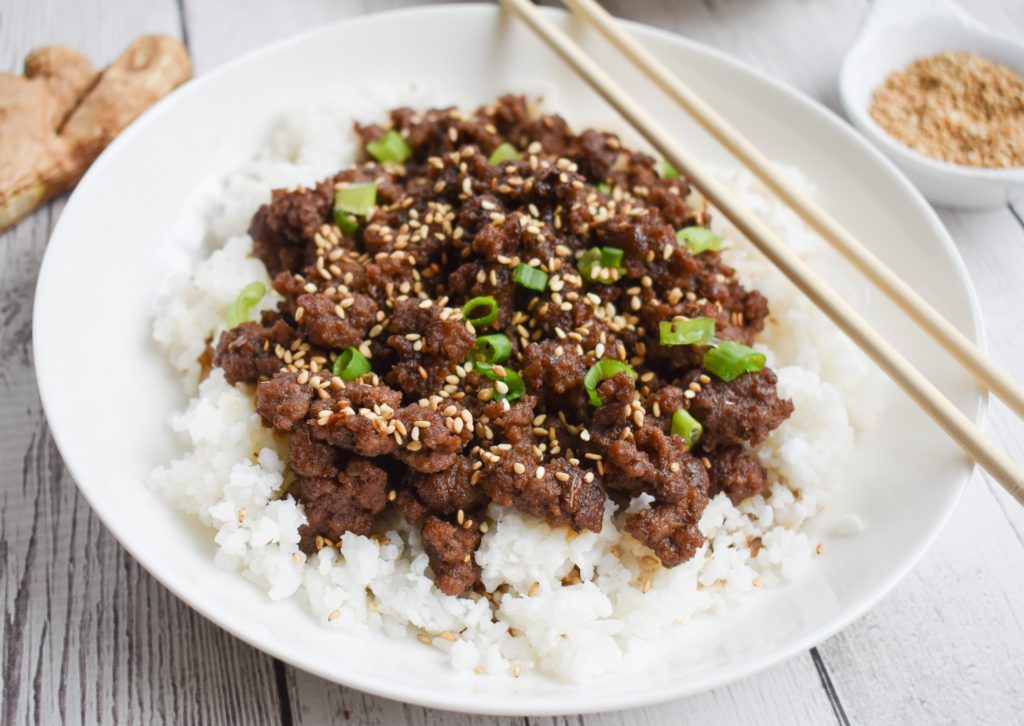


2 Responses
Wow so helpful!!
I am so grateful for this blog post. I have been suffering from IBS all my like and just a couple of weeks ago I was recommended to start the low FODMAP diet by my dietitian. U fortuna let y he only gave me a list of the allowed and not allowed foods and that’s it.
I was so overwhelmed and confused but this post has solved all of my doubts and fears. I will absolutely keep reading for more.
Thank you so much!!
Hi Irene,
I am so glad to hear from you. There are tons of resources for free on my blog, but consider also purchasing my first book, “The Low-FODMAP IBS Solution Plan & Cookbook” from Amazon. It will take you through the low-FODMAP diet in detail, all in one place with a 4 week meal plan and over 100 recipes. I wrote it for people like you, with all the tips I have learned from my experience and my medical training.
Good luck!
Rachel